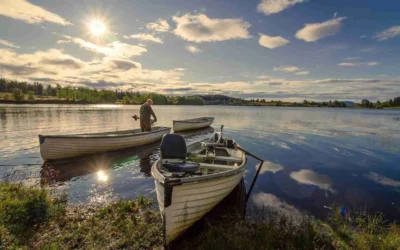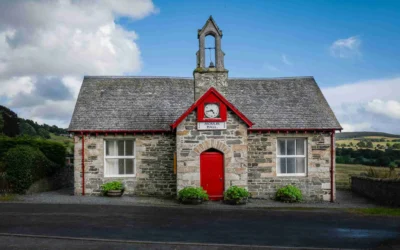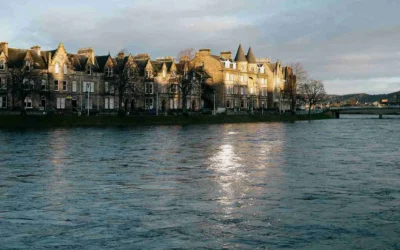Arthurs Seat | Everything You Need to Know
Arthurs Seat | Everything You Need to Know
Welcome to Arthur’s Seat, Edinburgh’s iconic extinct volcano and the heart of Holyrood Park. Rising 251 meters (822 feet) above the city, this ancient peak offers unparalleled 360-degree views of Edinburgh, the Firth of Forth, and the distant North Sea. Steeped in history and legend, possibly linked to King Arthur or a mythical sleeping dragon, Arthur’s Seat combines rugged natural beauty with urban accessibility.
Whether you’re a hiker seeking adventure, a history enthusiast, or simply looking to escape the city bustle, this Site of Special Scientific Interest (SSSI) promises a memorable experience. Lace up your hiking boots and prepare to be captivated by its dramatic cliffs, lush greenery, and sweeping vistas.
Location
Arthur’s Seat is nestled within Holyrood Park, just east of Edinburgh’s city center, near the Palace of Holyroodhouse at the end of the Royal Mile. The park’s address is approximately Queen’s Drive, Edinburgh, EH8 8HG, with key trailheads near the Scottish Parliament and Holyrood Palace. Landmarks like Edinburgh Castle and St Giles’ Cathedral are within a short walk, making it easy to orient yourself. For precise navigation, use GPS or apps like Google Maps with the postcode EH8 8HG. Its central location makes Arthur’s Seat a perfect addition to any Edinburgh itinerary.
Opening Hours
Holyrood Park and Arthur’s Seat are open 24/7, year-round, as a public Royal Park. However, vehicle access to certain roads, like the High Road and Dunsapie Loch Car Park, is restricted on weekends and public holidays (Saturday–Sunday, 8:15 am–9:00 am, reopening 5:00 pm–5:45 pm). The Radical Road footpath is currently closed due to rockfall risks. Always check the VisitScotland website for updates on closures or restrictions before your visit.
How to Get There
Arthur’s Seat is easily accessible from Edinburgh’s city center:
- Public Transport:
- Bus: Lothian Buses (e.g., routes 6, 35) stop near Holyrood Palace or the Scottish Parliament, a short walk from trailheads.
- Tram: The St Andrew Square stop is a 15–20-minute walk via the Royal Mile.
- Train: Edinburgh Waverley Station is a 10–15-minute walk to Holyrood Park.
- Walking: From Edinburgh Castle, stroll down the Royal Mile to Holyrood Palace (20–30 minutes), a scenic route passing historic sites like St Giles’ Cathedral.
- Driving: Limited parking is available at Dunsapie Loch Car Park or near Holyrood Palace (EH8 8HG), with fees around £2–£4 per hour. Due to high demand and weekend road closures, public transport is recommended. Use apps like Waze for real-time traffic updates.
For a scenic approach, walk from the Royal Mile, enjoying Edinburgh’s historic charm en route to the park.
Best Time to Visit
Spring (March–May) or early summer (June) offers the best weather for hiking Arthur’s Seat, with mild temperatures and drier conditions ideal for clear views. Early mornings or weekdays are recommended to avoid crowds, especially during peak tourist seasons like the Edinburgh Fringe Festival (August). Clear skies are crucial for enjoying the panoramic vistas, so check the weather forecast via BBC Weather before heading out. While the park is open year-round, avoid hiking in heavy rain or strong winds, as trails can become slippery and visibility may be poor. For a magical experience, consider a sunset hike for stunning city views bathed in golden light.
Tickets and Costs
Arthur’s Seat and Holyrood Park are free to visit, with no entry fees required. Parking fees may apply if driving (approximately £2–£4 per hour at Dunsapie Loch or nearby lots). Guided tours, offered by providers like GetYourGuide, range from £15–£20 per person and provide historical or geological insights. Booking guided tours in advance is recommended, especially during busy periods. No discounts apply for park access, but group rates may be available for guided tours.
| Item | Cost | Notes |
| Park Entry | Free | Open to all visitors |
| Parking | £2–£4/hour | Limited spaces, check availability |
| Guided Tours | £15–£20/person | Book via GetYourGuide |
What to Expect
A visit to Arthur’s Seat is a blend of adventure, history, and natural beauty:
- Hiking Trails: Multiple routes lead to the summit, ranging from easy to moderate. The easiest starts near Holyrood Palace, following a grassy slope past Dunsapie Loch (1–2 hours round trip). The steeper red route offers dramatic views but requires scrambling over rocks. The Salisbury Crags trail provides a gentler walk with excellent city views.
- Key Sights: Along the way, explore the 15th-century ruins of St. Anthony’s Chapel, the dramatic 150-foot cliffs of Salisbury Crags, and Duddingston Loch, a haven for birdlife. The summit offers 360-degree views of Edinburgh Castle, the Royal Mile, and the Firth of Forth.
- Duration: Expect 1–2 hours for a round-trip hike, with additional time for exploring the park or picnicking. A full park exploration could take 3–4 hours.
- Facilities: Restrooms are available near Holyrood Palace and the Scottish Parliament. A ranger station offers information, and ice cream vans are often present near trailheads. No facilities exist at the summit, so bring water and snacks.
- Unique Features: The park’s volcanic geology and SSSI status make it a hotspot for nature enthusiasts. Free ranger-led tours provide insights into the park’s flora, fauna, and history.
Safety and Accessibility
- Safety: The trails are generally safe but can be steep, rocky, and slippery, especially in wet conditions. Wear sturdy hiking shoes with good grip, stay on marked paths to avoid getting lost, and be cautious of sudden weather changes. Bring water and a windbreaker, as the summit can be windy. Rangers are on-site for assistance, and staying on designated trails helps preserve the park’s ecosystem.
- Accessibility: The summit is not wheelchair accessible due to steep, uneven terrain. However, lower areas of Holyrood Park, such as St. Margaret’s Loch, have flatter paths suitable for wheelchairs or strollers. Contact the ranger service via VisitScotland for accessibility advice.
- Family-Friendly Aspects: Suitable for children who can handle moderate hikes, but parents should supervise closely on steeper sections. The park’s open spaces are great for kids to explore.
History and Background
Arthur’s Seat, formed 350 million years ago as part of an ancient volcanic system, is Edinburgh’s highest peak and a geological marvel. Shaped by glacial erosion, it features two extinct volcanic vents, the Lion’s Head and Lion’s Haunch. Evidence of human activity dates back to 5,000 B.C., with four hill forts from around 2,000 years ago visible in the park. Its name, first recorded in the 16th century, may derive from King Arthur legends, possibly as the site of Camelot, though some suggest it comes from the Gaelic “Àrd-na-Said” (height of arrows). The hill inspired 18th-century geologist James Hutton and writers like Robert Louis Stevenson, who called it “a hill for magnitude, a mountain in virtue of its bold design.” In 1840, Elder Orson Pratt dedicated Scotland for missionary work from its summit, adding to its cultural significance.
Fun Facts:
- An ancient Celtic legend claims Arthur’s Seat is the resting place of a dragon that fell asleep after eating too much livestock.
- In 1836, 17 miniature coffins with wooden figures were found in a cave on the hill, sparking theories of ritualistic or memorial significance.
Learn more at the ranger station or VisitScotland.
Nearby Attractions
Holyrood Park’s central location makes it easy to combine with other Edinburgh highlights:
- Palace of Holyroodhouse (Royal Collection Trust): The British monarch’s official Scottish residence, a 5-minute walk from trailheads.
- Scottish Parliament Building (Scottish Parliament): A modern architectural gem offering free tours, adjacent to Holyrood Palace.
- Salisbury Crags: Dramatic cliffs within Holyrood Park, ideal for shorter walks or rock climbing (restricted since 2019).
- Duddingston Loch: A serene freshwater loch for birdwatching and fishing (free permit required from rangers).
- St. Anthony’s Chapel: A picturesque 15th-century ruin on the slopes, a short detour from the main trail.
- Edinburgh Castle (Edinburgh Castle): A 20–30-minute walk via the Royal Mile, offering history and stunning views.
For a full day, start with a morning hike up Arthur’s Seat, visit Holyrood Palace, and explore the Royal Mile to Edinburgh Castle.
Practical Tips
- What to Bring: Pack water, snacks, a map or GPS app, and a camera for the views. A hat and sunglasses are useful on sunny days.
- What to Wear: Wear sturdy hiking shoes or boots with good grip. Dress in layers, including a waterproof jacket, as weather can change rapidly.
- Rules: Stay on marked paths to protect the park’s ecosystem and avoid rockfall areas like Radical Road. Dogs are allowed but must be leashed. Respect other hikers and give way on narrow paths.
- Additional Advice: Start early to avoid crowds, especially during summer or festivals. Check the weather via BBC Weather for clear conditions. Consider a guided tour for deeper insights, bookable via GetYourGuide. Download a trail map from Walkhighlands for navigation.
FAQs
What are the opening hours of Arthur’s Seat?
Holyrood Park and Arthur’s Seat are open 24/7, year-round. Some roads are closed to vehicles on weekends (8:15 am–9:00 am, reopening 5:00 pm–5:45 pm). Check VisitScotland for updates.
How much does it cost to visit Arthur’s Seat?
Entry is free. Parking fees may apply (£2–£4/hour), and guided tours cost £15–£20 per person.
Is Arthur’s Seat suitable for children?
Yes, for children able to handle moderate hikes. Steep sections require supervision, but the park’s open spaces are family-friendly.
Are there any discounts available for Arthur’s Seat?
No discounts apply for park access, but guided tours may offer group rates via GetYourGuide.
How long does it take to visit Arthur’s Seat?
A round-trip hike takes 1–2 hours, depending on the route. Exploring the park may extend your visit to 3–4 hours.
Is photography allowed at Arthur’s Seat?
Yes, photography is encouraged, with stunning views perfect for capturing memorable shots.
Are there guided tours available at Arthur’s Seat?
Yes, ranger-led or private tours provide historical and geological insights. Book via GetYourGuide.
What’s the best way to get to Arthur’s Seat from the city center?
Walk 20–30 minutes along the Royal Mile from Edinburgh Castle, or take a bus to Holyrood Palace or Scottish Parliament.
Is Arthur’s Seat wheelchair accessible?
The summit is not accessible due to steep, rocky trails. Lower areas like St. Margaret’s Loch are more accessible.
Are there dining options near Arthur’s Seat?
Cafes and restaurants are available near Holyrood Palace and along the Royal Mile, including options like The Witchery by the Castle.
The Roman Baths | Everything You Need to Know
The Roman Baths | Everything You Need to Know Step into the ancient world at the Roman Baths, one of the best-preserved Roman spas globally, nestled in the heart of Bath, Somerset, England. Built around 70 AD as part of the Roman settlement Aquae Sulis, this UNESCO...
Things to Do in Dunfermline, Scotland
Things to Do in Dunfermline, Scotland Dunfermline, nestled in the heart of Fife, Scotland, is a city steeped in history and culture, offering a perfect blend of ancient heritage and modern attractions. Whether you’re a history enthusiast, an outdoor adventurer, or a...
Things to Do in Stirling
Things to Do in Stirling Stirling, nestled in the heart of Scotland, is a city where history, culture, and natural beauty converge to create an unforgettable experience. My first glimpse of Stirling Castle felt like stepping into a medieval tale, its towering presence...
Things to Do in Perth
Things to Do in Perth Perth, the vibrant capital of Western Australia, welcomes visitors with its golden beaches, lush parks, and thriving cultural scene. Strolling along the Swan River, with the city skyline reflecting on the water, feels like stepping into a serene...
Things to Do in Inverness
Things to Do in Inverness Inverness, fondly known as the capital of the Scottish Highlands, is a vibrant city where history, culture, and stunning landscapes converge. My first glimpse of the River Ness, with Inverness Castle perched above, felt like stepping into a...





